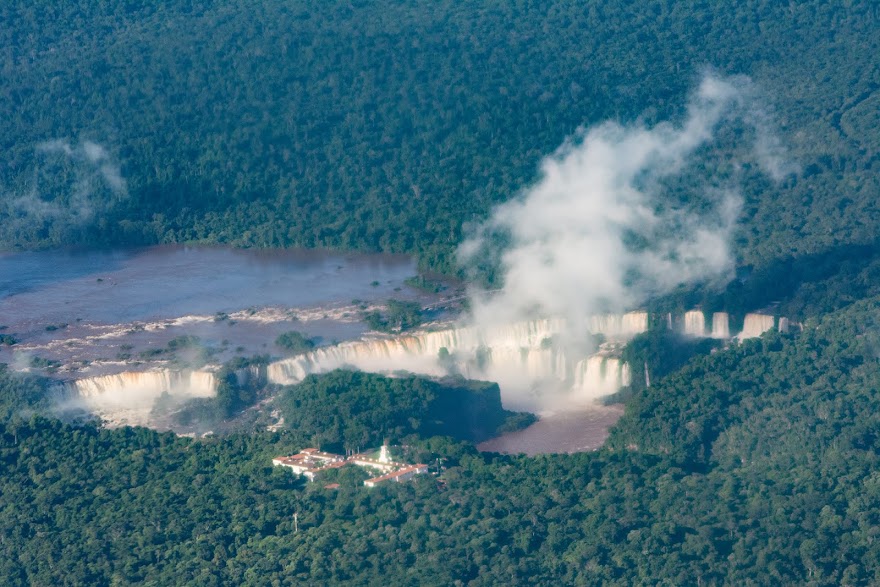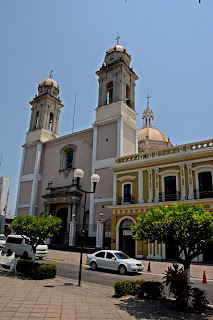Below is an op-ed I wrote and submitted to three newspapers; one declined because they already had a Romero piece, the other two didn't bother to respond. So, here is my tribute to Romero (En español a continuación):
May 23 is
a glorious day for Salvadorans, one that most of the population has awaited for
decades. Oscar Arnulfo Romero, the archbishop of San Salvador from February
1977 until his assassination by a right-wing death squad while saying Mass on
March 24, 1980, will be beatified.
Romero’s
murder was the first time a Catholic priest had been killed in a church since
Thomas Becket in 1170. Both were
archbishops who paid with their lives for standing up to their governments. In Becket’s case, he ran afoul of King Henry
II for refusing to put the Crown ahead of the Church and the king ordered his
death.
I had the
privilege and honour of meeting, interviewing, and getting to know
“Monseñor”—as he was affectionately called.
He was one of the moral giants of the late 20th century—up
there with Martin Luther King, Jr., Nelson Mandela, Desmond Tutu, and other
Latin American Catholic bishops who spoke truth to power during the dark years
of military dictatorships. I have never
known anyone as humble, as clear in his faith, as courageous and unflinching.
 |
| Monseñor Romero and me during an interview, December 1979. |
Romero
was plucked from the obscurity of a small diocese in eastern El Salvador where
his focus was entirely on pastoral work and avoiding anything that smacked of
politics. He was chosen precisely for this reason; Auxiliary Bishop Arturo
Rivera Damas, the popular choice, was bluntly told in Rome why he wasn’t
selected: “We don’t want anyone who will oppose the government.”
The
murder of a rural parish priest, Rutilio Grande, just three weeks after
Romero’s installation, was transformative.
In an interview three months before his own death, Monseñor recalled the
moment:
Father
Grande’s death and the subsequent deaths of other priests impelled me to take
an energetic attitude before the government. Because of Grande’s death I said
that I would not attend any official acts until this situation (who had killed
Grande) was clarified…. I support all of the priests in the communities. We
have managed to combine well the pastoral mission of the Church, preference for
the poor, to be clearly on the side of the repressed, and from there to clamor
for the liberation of the people.
Thus,
Romero ran afoul of the government and economic elite—known as the
“oligarchy”--for his relentless defence of human rights and denunciations of
the increasing numbers of dead and disappeared
that unfolded in El Salvador in the late 1970s and early 80s. While the Salvadoran government didn’t order
Romero’s death, it created a climate in which right-wing death squads operated
with impunity—often out of military barracks.
Sunday
Mass was a must-do during my first months in the country. The Mass was
traditional but Romero’s homily, often 90 minutes long, was not. Broadcast on
the archdiocesan radio station, he became “the voice of those who have no
voice.”
Beginning
with a theological exposition on the day’s scriptural readings, Romero related
them to the reality of life in El Salvador. After church announcements, a
recitation of the previous week’s events followed, which included a reading of
every documented case of persons who had been killed, assaulted, or tortured—no
matter by whom. The homily was, in
short, an oral newspaper.
Romero
once said, “If they kill me, I will be resurrected in the Salvadoran
people.” With his death the church was
effectively silenced. Rome kept his successor, Arturo Rivera Damas, on a short
leash by naming him “apostolic administrator” and waiting three years to make
him archbishop.
On
February 1, 1992, the day peace formally came to El Salvador after eleven years
of civil war (a cease fire had been in effect for several weeks), the former
guerrillas, soon to be a legal political party, held a celebration in the plaza
in front of the cathedral. As I entered the plaza and looked up, an enormous
banner, billowing from the roof, stopped me. It held Romero’s visage and the
words, “Monseñor, You are resurrected in your people.”
On May 23
that sentiment will flow through the streets of San Salvador and across the
country. The Legislative Assembly, at the request of President Salvador Sánchez
Cerén, a former guerrilla commander, this week approved a bill that gives
workers in San Salvador and surrounding municipalities May 22nd off with pay,
and all workers throughout the country the same benefit on the 23rd.
The
oligarchy, many of whom funded the death squads 35 years ago—even as they never
missed Mass and sent their children to Catholic schools--will stay hidden
behind their high walls and gated communities.
No matter. May 23 belongs to Oscar Arnulfo Romero and the millions of
Salvadorans to whom he gave hope and a vision of a better country.
__________________________________________________
Mañana, 23 de mayo, Arzobispo Oscar Arnulfo Romero serán beatificado. La ceremonia llevará a cabo en San Salvador y lamento que no puedo asistir. Conocí y llegué a conocer Monseñor Romero durante cinco meses de investigación en El Salvador, 1979-80. De hecho, me fui del país para regresar a casa y escribir un libro tan solo cuatro días antes de su asesinato. Abajo es un artículo de opinión escrito y presentado a tres periódicos; uno disminuido porque ya tenían un artículo sobre Romero, los otros dos no molestan a responder. Así que, aquí está mi homenaje a Romero
El 23 de mayo es un día glorioso para los salvadoreños, uno que la
mayoría de la población ha esperado durante décadas. Oscar Arnulfo Romero,
Arzobispo de San Salvador desde febrero de 1977 hasta su asesinato a manos de
un escuadrón de la muerte derechistas mientras decía la misa el 24 de marzo de
1980, será beatificado.
El asesinato de Romero fue la primera vez que un sacerdote católico
había sido asesinado en una iglesia desde Thomas Becket en 1170. Ambos fueron
arzobispos que pagaron con sus vidas, resulta de oponer las políticas de sus
gobiernos. En caso de Becket, se enfrentó con el rey Henry II por negarse a
poner la corona por delante de la iglesia y el rey ordenó su muerte.
Tuve el privilegio y el honor de reuniones, entrevistas y conocer
"Monseñor" — como lo llamaban cariñosamente. Fue uno de los gigantes morales
de finales del siglo XX — junto a Martin Luther King, Jr., Nelson Mandela,
Desmond Tutu y otros obispos católicos de América Latina que habló la verdad al
poder durante los oscuros años de las dictaduras militares. Nunca he conocido a
alguien tan humilde, como claro en su fe, como valiente y resuelta.
Romero fue sacado de la oscuridad de una pequeña diócesis en el oriente
de El Salvador donde su enfoque fue enteramente en trabajo pastoral y evitar
cualquier cosa que golpeó de la política. Fue elegido precisamente por esa
razón; el Obispo Auxiliar Arturo Rivera Damas, la opción popular, le dijo sin
rodeos en Roma porque él no fue elegido: "No queremos a nadie que se
opondrá al gobierno".
El asesinato de un sacerdote de una parroquia rural, Rutilio Grande,
apenas tres semanas después de la instalación de Romero era transformativo. En
una entrevista tres meses antes de su muerte, Monseñor recordó el momento:
"La muerte del padre Grande y las muertes posteriores de otros
sacerdotes me empujó a tomar una actitud enérgica ante el gobierno. Debido a la
muerte del Grande le dije que no asistiera ningún acto oficial hasta que se
aclaró la situación (que había matado a Grande)... Apoyo a todos los sacerdotes
en las comunidades. Hemos conseguido combinar bien la misión pastoral de la
iglesia, preferencia por los pobres, a ser claramente del lado de los reprimidos
y desde allí al clamor por la liberación del pueblo".
Por lo tanto, Romero se enfrentaron con el gobierno y la élite económica
— conocida como la "oligarquía"--por su implacable defensa de los
derechos humanos y denuncias de los crecientes números de muertos y
desaparecidos que se desarrollaron en El Salvador al finales de los 70 y
principios de los 80. Mientras que el gobierno salvadoreño no ordenó la muerte
de Romero, creó un clima en que los escuadrones de la muerte derechistas
operado con impunidad — a menudo fuera de los cuarteles militares.
La Misa los domingos era un deber-hacer durante mis primeros meses en el
país. La Misa era tradicional pero la homilía de Romero, a menudo de 90 minutos
de duración, no. Transmitido por la emisora de radio de la Arquidiócesis, YSAX,
se convirtió en "la voz de quienes no tienen voz".
A partir de una exposición teológica en lecturas de las escrituras del
día, Romero los relacionaron con la realidad de la vida cotidiana en El
Salvador. Después de anuncios de la iglesia, siguió una recitación de los
acontecimientos de la semana anterior, que incluyó una lectura de todos los
casos documentados de personas que habían sido asesinados, agredidos o
torturados — no importa por quién, derecha o izquiersa. La homilía fue, en
definitiva, un periódico oral.
En un momento, Romero dijo que, "Si me matan, seré resucitado en el
pueblo salvadoreño." Con su muerte la iglesia se silenció. Roma mantuvo su
sucesor, Arturo Rivera Damas, con una correa corta por nombrarlo
"administrador apostólico" y esperó tres años para hacerle arzobispo.
El 01 de febrero de 1992, el día de que la paz formalmente llegó a El
Salvador después de once años de guerra civil (un alto de fuego había sido en
efecto durante varias semanas), los ahora exguerrilleros, el FMLN, pronto a ser
un partido político legal, llevó a cabo una celebración en la plaza frente a la
catedral.
Cuando entró en la plaza y levanté la vista, una enorme bandera,
ondulando desde el techo, me detuvo. Sostuvo el rostro de Romero y las
palabras: "Monseñor, resucitaste en tu pueblo."
El 23 de mayo ese sentimiento fluirá a través de las calles de San
Salvador y en todo el país. La Asamblea Legislativa, a propuesta del Presidente
Salvador Sánchez Cerén, un ex comandante guerrillero, esta semana aprobó una
ley para dar asueto pagado el día viernes 22 de mayo a nivel metropolitano de
San Salvador y el mismo beneficio el 23 a todo el país.
La oligarquía, muchos de los cuales financiaron los escuadrones de la
muerte hace 35 años — aun cuando nunca perdió la Misa y envió a sus hijos a
escuelas católicas--permanecerá oculto detrás de sus altos muros y comunidades
con portones. No importa. El 23 de mayo pertenece a Oscar Arnulfo Romero y los
millones de salvadoreños a quienes les dio esperanza y una visión de un país
mejor.

























